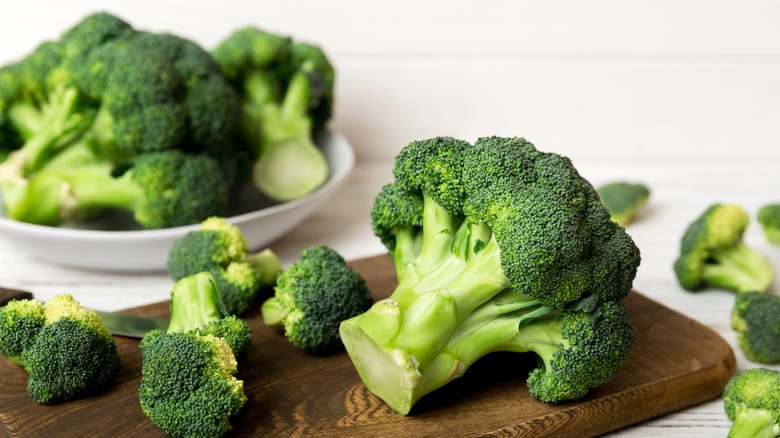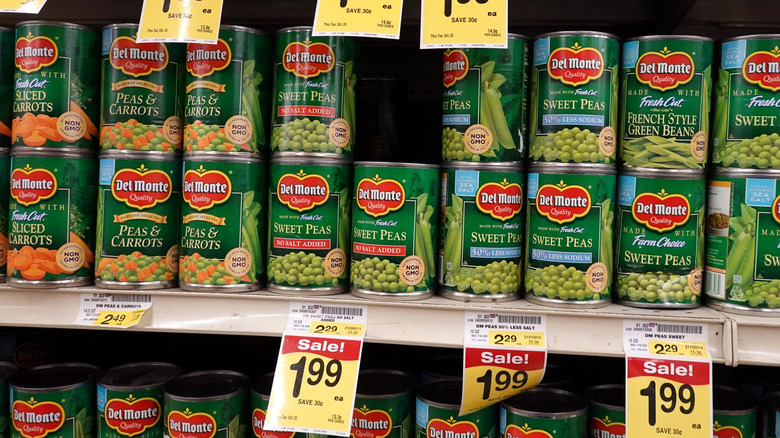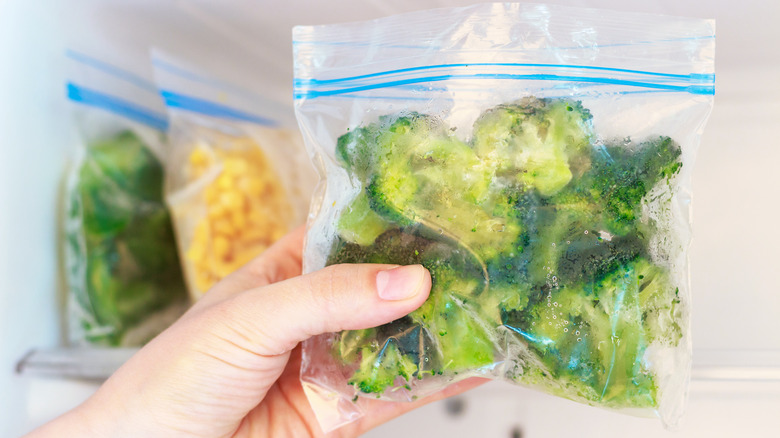Why You Don't See Canned Broccoli In Grocery Aisles
Considering the wide variety of canned vegetables that are worth keeping in your pantry, you'd be forgiven for thinking that pretty much any vegetable can be preserved by canning it. Case in point: Broccoli. Theoretically, broccoli could be canned just like potatoes or carrots, but the end result won't be very appetizing. Before you can any vegetables, they need to be cooked for a certain amount of time (this varies by vegetable). Broccoli would break down and get mushy in this situation — really, it's the delicate florets that are the problem, more than the robust stalk. But not only does canned broccoli have a gross texture, the taste and color will typically also suffer in the canning process. They can become discolored and develop an intense flavor that would generally be considered unpleasant (plus, overcooking broccoli, as is required for canning, can cause a nasty but harmless sulfur smell). So, for this combination of reasons, canned broccoli really just isn't a thing.
Interestingly, the same also applies to cauliflower for similar reasons — its flavor intensifies in an unpleasant way, so you're better off looking for alternative preservation methods like pickling. In fact, a number of cruciferous vegetables (the family that includes broccoli, cauliflower, cabbage, and Brussels sprouts) aren't recommended for canning. Like broccoli, cabbage and Brussels sprouts also end up tasting unpleasant when canned.
Safety issues with canning broccoli
So, you generally can't buy canned broccoli — but if you're really determined (and willing to brave the problems of texture, taste, and smell), you might be curious to try it at home. You shouldn't. Canning broccoli at home is not the wisest idea, as there are possible safety issues linked to canning broccoli.
There are two ways to can vegetables: With a boiling water bath and the pressure-canning method. Veggies that are high in acid can be canned with the boiling water method (although in reality, you'll likely use jars, not cans), since the boiling water and acid in the veggies will kill off harmful bacteria like botulism. But low-acid veggies — which include broccoli — need to be canned using the pressure method. Here, they need to be cooked in a high-pressure environment where water can be heated past its boiling point without evaporating, killing off the botulism and other pathogens. Pressure canning at home is, frankly, a pretty onerous task: You need specialty equipment and careful attention to ensure that it's all super-sterile. You even need to adjust the pressure you use depending on whether you're in a high- or low-elevation location. It can easily go wrong (which could result in food poisoning), and even if you get it right, that canned broccoli will likely taste unpleasant at best.
Other ways to preserve broccoli
Obviously, if you've found yourself with an excess of broccoli, you shouldn't try to can it at home (although it's there are easy ways to safely can many other vegetables). But you're not doomed to throw it away or let it rot, as there are other ways to preserve it. Freezing is a go-to option, but it's best not to just throw your broccoli directly in the freezer, as it can become bitter and discolored, and it'll likely be mushy and semi-disintegrated when you thaw it. Instead, you'll need to blanch it: Cut it into florets and throw it into boiling water for a couple of minutes before moving it to iced water so it doesn't keep cooking. Then, you can dry it and put it on a tray to freeze it so it doesn't stick together as it freezes (but you can move it to a bag when it's frozen).
Pickling could be a possibility, although it's not commonly done with whole broccoli — home cooks are far more likely to pickle other cruciferous veggies like cauliflower. While there are recipes out there, pickling whole florets could run the risk of turning them mushy. However, there are reputable recipes worth trying if you just want to pickle your broccoli stems: With standard ingredients like vinegar, salt, and aromatics, they can be a tasty snack.


